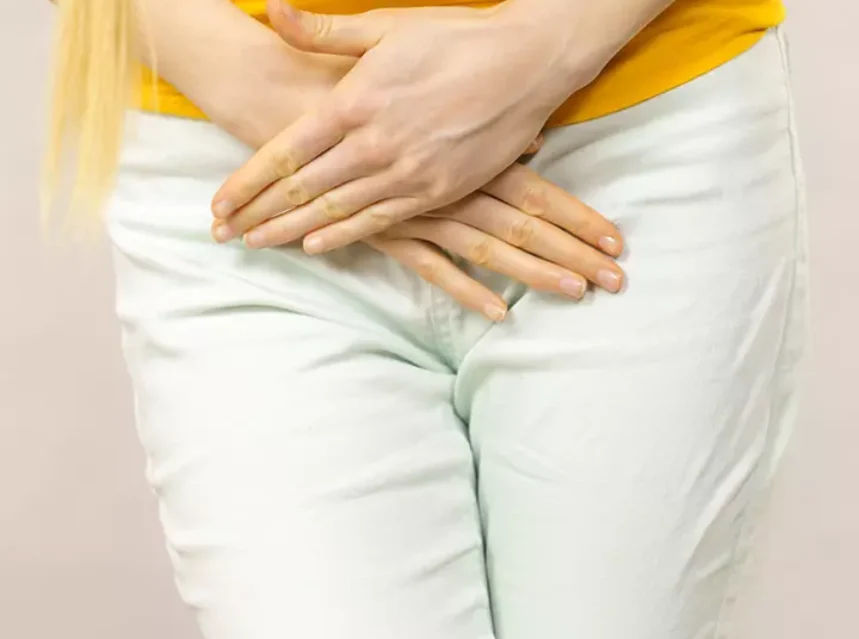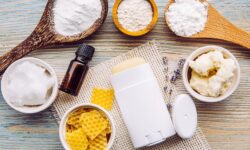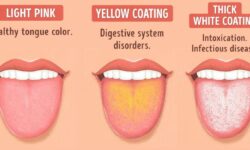11 Best Home Remedies For Yeast Infection That Actually Work

Home remedies for vaginal yeast infection can help you get some relief in the initial stages of the infection as an alternative for antifungal ointments. A vaginal yeast infection often starts with mild discomfort and can lead to a foul-smelling discharge and burning sensation down there. This might feel very discomforting and irritating.
Yeast infection can happen to anyone and affect the warm and moist areas in the body, but women tend to have vaginal yeast infections more often. Yeast infection is usually caused by the fungus Candida and affects as many as 75 out of 100 women worldwide (1). While women are more prone to it, men can sometimes get it as a sexually transmitted disease. If you doubt that something is off down there, you can opt for a medical diagnosis or begin treatment with some of the home remedies for vaginal yeast infection discussed here. Read on to know more in detail.
In This Article
- Types Of Yeast Infections
- What Causes Yeast Infections? What Is Candida albicans?
- What Are The Signs And Symptoms Of A Yeast Infection?
- How Is A Vaginal Yeast Infection Diagnosed?
- Home Remedies For Yeast Infection
- What To Eat To Treat Yeast Infections
- Home Remedies That Don’t Treat Yeast Infections
- Preventing Vaginal Yeast Infections
- When To Contact A Doctor
- Infographic: 5 Easiest Ways To Treat Vaginal Yeast Infection Naturally
- Frequently Asked Questions
- Key Takeaways
Types Of Yeast Infections
Yeast infections can be of various types, depending on the affected part of the body or the strain of yeast causing the infection. The most common types of yeast infections include:
- Candida auris: This is an invasive and difficult to treat yeast infection caused by a strain of yeast known as candida auris.
- Candidemia: Candidemia is the condition where the yeast infection is present in the bloodstream.
- Genital/Vulvovaginal Candidiasis: An yeast infection in the genitalia or the vagina is commonly referred to as genital or vaginal candidiasis.
- Invasive Candidiasis: This is a serious yeast infection that spreads to the heart, lungs, eyes, brain and other parts of the body from the bloodstream.

Shutterstock
- Oral Thrush (Oropharyngeal Candidiasis): Oral thrush is yeast infection in the mouth or throat which presents white patches as the most common symptom.
- Esophageal Candidiasis: Candidiasis, or a yeast infection caused by Candida in the esophagus (the tube connecting the throat and the stomach) is called esophageal candidiasis.
- Tinea Versicolor: This is a fungal infection of the skin.
What Causes Yeast Infections? What Is Candida albicans?
Yeast infections are caused by a type of fungus called Candida. This fungus has about 20 different strains that cause infections in different parts of the body. Candida albicans is the strain that is most commonly responsible for yeast infections, especially vaginal yeast infections (2).
Under the influence of antibiotics, cortisone drugs, and other medications, yeast can overgrow in the intestines and migrate to the vagina. That’s why it’s important to treat vaginal yeast infections both locally and body-wide.
Let us now take a look at the signs and symptoms of a yeast infection.
What Are The Signs And Symptoms Of A Yeast Infection?
Yeast infection is also known as candidiasis. It can occur on any part of the body. It is most commonly seen in the oral parts or genitals. Oral yeast infection, or oral thrush, has the following symptoms:
- White patches in the mouth
- Difficulty in swallowing food
- Pain in the infected part
The signs and symptoms of a vaginal yeast infection are as follows:
- Unbearable itchiness in and around the vagina
- Swelling, redness, and burning of the affected area
- White discharge that looks like cottage cheese but has no smell
- Burning sensation or pain while urinating
- Pain during sex
- Soreness
Before an infection can be treated, it needs to be properly diagnosed. This is especially true for a vaginal yeast infection, as it may be confused with a bacterial infection without correct diagnosis.
How Is A Vaginal Yeast Infection Diagnosed?
To diagnose a yeast infection, your healthcare provider may ask you questions about your medical history to gather information regarding past vaginal infections. This may be followed up by a pelvic examination which involves close examination of the vagina and the cervix for signs of infection. In some cases, a sample of your vaginal fluid may be collected for testing so that the type of fungus causing the infection may be identified.
After the diagnosis, your doctor may prescribe you medications or you may seek guidance regarding the use of home remedies to treat the infection. Listed below are some home remedies for yeast infection that can help relieve the symptoms.
Home Remedies For Yeast Infection
1. Apple Cider Vinegar

Shutterstock
ACV possesses antifungal properties against Candida (3). Therefore it may help facilitate recovery from yeast infection when applied topically. In addition, when consumed in an undiluted or mildly-diluted manner, it may promote a hostile environment for certain Candida species (yeast) and curb their growth (4), (5).
Note: Undiluted ACV may irritate the sensitive vaginal area, so it should be used with caution and in a properly diluted manner.
You Will Need
- 1-2 tablespoons apple cider vinegar
- A glass of water
What You Have To Do
- Mix the ACV in the water and drink it up.
- Alternatively, mix one cup of ACV in a lukewarm bath and soak in it.
How Often You Need To Do This
Do this 2-3 times a day.
2. Garlic
Garlic exhibits strong antifungal activity against Candida species, making it an excellent and easy home remedy for yeast infection (6), (7).
You Will Need
- 2-3 cloves garlic
- Water
What You Have To Do
Swallow 1-2 garlic cloves with water.
How Often You Need To Do This
Do this 1-2 times a day.
Caution: Do not use the garlic paste on sensitive areas, such as the vagina and inner thighs.
3. Boric Acid
Boric acid powder in solution is mild enough to use as an eyewash, and it also kills yeast (antifungal) and viruses (antiviral). It is recommended by doctors when most antifungals fail to cure yeast infection (8).
You Will Need
- Boric acid powder
- Gelatin capsules
What You Have To Do
- Fill the capsule with as much boric powder as you can and close it.
- Place this capsule in the vagina before going to bed.
How Often You Need To Do This
Do this for 12-15 days to completely clear out the infection.
Caution: Boric acid in high doses is toxic orally, so it’s best not to ingest these capsules. Also, do not use this home remedy if you are pregnant.
4. Tea Tree Oil

Shutterstock
This is yet another favorite amongst naturopaths. Tea tree oil is antifungal, antiviral, and antibacterial (9). Along with the honey or warm water, it also soothes the inflamed skin.
You Will Need
- 3 drops tea tree oil
- 2 tablespoons honey
What You Have To Do
- Mix the essential oil with the honey and apply this mixture to the affected area.
- Leave it on overnight.
- Rinse in the morning with lukewarm water.
- You can also soak an organic cotton tampon in two to three drops of tea tree oil diluted in one-third cup of warm water. Insert this into the vagina and leave it overnight.
How Often You Need To Do This
Do this for a few nights before going to bed.
Caution: Tea tree oil is extremely potent. Do a patch test and wait until 24 hours to notice any reaction.
5. Yogurt And Probiotic Combination Therapy
A combination of yogurt and honey was found to relieve a few symptoms of yeast infection (10). Another study showed that consuming yogurt could help reduce the spread of Candida fungi (11).
Note: While there is some evidence to support the topical application of yogurt for the treatment of yeast infections, it should be used with caution. The natural sugars present in yogurt and honey (in the case of combination use) may aggravate a yeast infection in some individuals, especially when applied to the vagina.
You Will Need
- Plain yogurt
- Cotton tampon
What You Have To Do
- Dip the tampon in the yogurt and slip it into the vagina. Make sure not to push it in too far.
- Leave it in for an hour or two.
How Often You Need To Do This
Repeat this every few hours.
6. Coconut Oil
Coconut oil can help in treating fungal infections caused by drug-resistant Candida strains (12). It showed significant antifungal activity against Candida albicans, which is comparable with ketoconazole (13).
You Will Need
Virgin coconut oil
What You Have To Do
- Wash and dry the affected area thoroughly. Use a soft cloth so that you do not irritate the inflamed skin any further.
- Apply a thin layer of coconut oil over the area and keep it on.
How Often You Need To Do This
Do this 2-3 times a day.
7. Epsom Salt Bath
Epsom salt is essentially magnesium sulfate. This chemical salt is capable of killing yeast and treating the infection (14).
You Will Need
- 2 cups Epsom salt
- Bathtub (full of warm water)
What You Have To Do
- Add the salts to the warm water in the tub and give it a few swirls to dissolve.
- Soak in this water for 10 to 15 minutes.
How Often You Need To Do This
Repeat this 3 times a week.
8. Oil Of Oregano
Oregano oil is one of the most potent oils that can keep the infection from spreading from the anus to the vagina as yeast overgrows in the large intestines. Its phenolic components, namely carvacrol and thymol, exert fungicidal effects on the yeast causing the infection (15).
You Will Need
- 3 drops of oregano oil
- A glass of water
What You Have To Do
Add the oil to the glass of water and drink it.
How Often You Need To Do This
Drink this 2 times a day for a week. You can increase the dose to up to 6 drops per glass of water.
Caution: Before using oregano oil for pregnant women and children, please consult your doctor.
9. Aloe Vera

Shutterstock
Aloe vera gel can help soothe irritation and alleviate inflammation in the affected area. It also displays antifungal effects on C.albicans (16).
You Will Need
Fresh aloe vera gel
What You Have To Do
- Extract aloe gel from a leaf.
- Apply this freshly extracted gel in a thin layer over the affected area.
- Let it air-dry.
How Often You Need To Do This
Reapply 2-3 times a day.
10. Peppermint Oil
This is an excellent remedy for oral thrush, also called oral yeast infection. Peppermint oil contains compounds that exhibit therapeutic potential against Candida-related infections (17).
You Will Need
- 2-3 drops peppermint oil
- 8 oz. of water
What You Have To Do
- Mix the oil in the water and swish it around in your mouth for a few minutes. Spit it out.
- Rinse your mouth with clean water.
- You can also ingest one or two capsules of peppermint oil. Make sure each capsule contains at least 0.2 milliliters of oil. Do this after consulting your doctor.
How Often You Need To Do This
Do this 2 times a day.
11. Green Tea
Green tea contains catechins that strengthen the body’s immune system and help it to fight yeast infection (18), (19). Drinking green tea will quicken the elimination of the yeast from your body. The topical application of green tea can reduce inflammation and soothe the skin in the affected area (20).
You Will Need
- Green tea (loose or tea bag)
- A cup of hot water
What You Have To Do
- Steep the green tea in hot water for a few minutes and strain.
- Drink this tea while it is warm. You can add a dash of honey and/or lemon for flavor.
- You can also refrigerate the used tea bag and place it on the affected area for 10-12 minutes.
How Often You Need To Do This
Drink 2-3 cups of this herbal tea in a day.
If you wish to keep yeast infections at bay or want to treat an infection that doesn’t seem to abate, make small changes in the way you eat.
What To Eat To Treat Yeast Infections

Shutterstock
Including certain foods in your diet may help you avoid or recover quickly from yeast infections. For instance, fermented foods that contain natural probiotics can help eliminate yeast. These include:
- Kefir
- Yogurt
- Kimchi
- Sauerkraut
- Pickles
You should also consume the following:
- Garlic
- Coconut oil
- Cruciferous vegetables such as broccoli, cauliflower, cabbage, bok choy, arugula and brussels sprouts
- A low-sugar diet
While most home remedies and recommended dietary changes can help treat mild to moderate yeast infections, there are some popular home remedies that should be avoided as either they are not well studied for efficacy or they are unsafe and may cause further complications. Let’s look at some of them.
Home Remedies That Don’t Treat Yeast Infections
- Douching With Hydrogen Peroxide
Hydrogen peroxide may kill the natural bacteria present in the vagina. This may in turn lead to recurrent yeast infections as a healthy bacterial population in the vagina helps fight off unwanted microbial growth. .
- Douching With Feminine Hygiene Products
Many feminine hygiene products claim to help curb vaginal yeast infections. However, there is little evidence to support their use. The vagina is a self-cleaning organ and these products may hamper the natural pH of the vagina, destroy healthy bacterial growth and exacerbate yeast infections in some cases. D not use these unless directed by a physician.
Yeast infections may recur despite using home remedies or alternate treatment methods if certain precautions are not taken. There are however certain things you can do to prevent vaginal yeast infections from developing or recurring.
Preventing Vaginal Yeast Infections
- Eliminate foods rich in refined carbs and sugars from your diet.
- Stay away from alcohol.
- Avoid douching or using soap inside the vagina.
- Wear well-fitted (not too tight) and breathable cotton underwear.
- Avoid wearing sweaty or wet clothes for long periods and change out of them as early as possible.
- Avoid the use of scented soaps and detergents.
- Replace pads and tampons frequently.
- Practice wiping from the front to back while using the bathroom.
- Avoid extremely hot baths or prolonged time in hot tubs.
Despite taking preventive measures or applying home remedies and dietary changes, there may be instances where it is in your best interest to consult your healthcare provider regarding suspected yeast infection.
When To Contact A Doctor
- It is recommended to contact a doctor if:
- This is your first yeast infection.
- Home remedies do not seem to be working for you.
- The symptoms persist beyond a week.
- You are experiencing recurring yeast infections.
- You are pregnant and have the symptoms of a vaginal infection.
- You are unsure about whether your infection is bacterial or fungal.
- Your previous medications for yeast infections do not seem to be working.
Infographic: 5 Easiest Ways To Treat Vaginal Yeast Infection Naturally
Vaginal yeast infections are quite common and equally, if not more, discomforting with symptoms such as itchiness. Thankfully, you can also treat this fungal infection at home with simple remedies. Check out the infographic to learn about the easiest ways to relieve the symptoms and regain comfort and confidence.
Yeast infections, especially vaginal yeast infections, are caused by different Candida fungus strains. You may be more prone to developing yeast infection if you have recently taken antibiotics, cortisone drugs, or certain other medications. Vaginal yeast infections can present symptoms such as intense itchiness, burning sensation while peeing, white vaginal discharge that resembles cottage cheese, and pain during intercourse. As the fungus multiplies within the body, you need to treat it body-wise and the target areas where it has overgrown. Home remedies for yeast infection include apple cider vinegar, Epsom salt bath, garlic, aloe vera, peppermint oil, green tea, etc.
Frequently Asked Questions
How long do yeast infections last?
When a yeast infection is left untreated, the symptoms do not vanish on their own. They may become worse and cause more complications. Using home remedies or proper antifungals is recommended. Depending on the type of treatment you are using, it may take any time between three to seven days for the infection to clear.
What is the fastest way to get rid of a yeast infection?
The fastest way to get rid of a yeast infection involves the treatment with a prescription antifungal medication such as Fluconazole.
Can yeast infections go away on their own?
Mild cases of yeast infections may clear away on their own within a couple of weeks. However, if you are pregnant, you should seek treatment and not wait for it to clear on its own.
What happens if a yeast infection is left untreated?
It depends. In some mild cases, a yeast infection may resolve on its own. In other cases, it may progress to more severe infection and cause complications.
Key Takeaways
- There are a variety of yeast infections caused by candida that can affect different body parts.
- Depending on the affected part, symptoms of yeast infections can vary.
- Home remedies such as tea tree oil, probiotics, apple cider vinegar, boric acid, and peppermint oil may help treat yeast infections.
- Eliminating sugar and alcohol from the diet, avoiding douching and the use of scented soaps, and keeping the vaginal region dry and clean can help prevent vaginal yeast infections.
Sources
Articles on StyleCraze are backed by verified information from peer-reviewed and academic research papers, reputed organizations, research institutions, and medical associations to ensure accuracy and relevance. Read our editorial policy to learn more.
- Vaginal yeast infection (thrush): Overview
https://www.ncbi.nlm.nih.gov/books/NBK543220/ - Candidiasis
https://www.cdc.gov/fungal/diseases/candidiasis/ - Antifungal Activity of Apple Cider Vinegar on Candida Species Involved in Denture Stomatitis
https://www.ncbi.nlm.nih.gov/pubmed/25219289 - Antifungal and Antibacterial Activities of Apple Vinegar of Different Cultivars
https://www.ncbi.nlm.nih.gov/pmc/articles/PMC8369171/ - Antimicrobial activity of apple cider vinegar against Escherichia coli Staphylococcus aureus and Candida albicans; downregulating cytokine and microbial protein expression
https://www.ncbi.nlm.nih.gov/pmc/articles/PMC5788933/ - Effects of Fresh Garlic Extract on Candida albicans Biofilms
https://www.ncbi.nlm.nih.gov/pmc/articles/PMC538912/ - Antimicrobial properties of allicin from garlic
https://www.ncbi.nlm.nih.gov/pubmed/10594976 - Boric acid for recurrent vulvovaginal candidiasis: the clinical evidence
https://pubmed.ncbi.nlm.nih.gov/21774671 - Melaleuca alternifolia (Tea Tree) Oil: a Review of Antimicrobial and Other Medicinal Properties
https://www.ncbi.nlm.nih.gov/pmc/articles/PMC1360273/ - The Comparison of Vaginal Cream of Mixing Yogurt Honey and Clotrimazole on Symptoms of Vaginal Candidiasis
https://www.ncbi.nlm.nih.gov/pmc/articles/PMC4803919/ - Impact of Eating Probiotic Yogurt on Colonization by Candida Species of the Oral and Vaginal Mucosa in HIV-Infected and HIV-Uninfected Women
https://www.ncbi.nlm.nih.gov/pmc/articles/PMC3903393/ - In vitro antimicrobial properties of coconut oil on Candida species in Ibadan Nigeria
https://pubmed.ncbi.nlm.nih.gov/17651080 - Comparison of Antimicrobial Activity of Chlorhexidine Coconut Oil Probiotics and Ketoconazole on Candida albicans Isolated in Children with Early Childhood Caries: An In Vitro Study
https://pubmed.ncbi.nlm.nih.gov/27051559 - Effect of NaCl reduction and replacement on the growth of fungi important to the spoilage of bread
https://www.ncbi.nlm.nih.gov/pubmed/20630316 - Antifungal activities of origanum oil against Candida albicans
https://www.ncbi.nlm.nih.gov/pubmed/11855736 - Anti-fungal activity of Aloe vera: In vitro stud
https://www.researchgate.net/publication/281367959_Anti-fungal_activity_of_Aloe_vera_In_vitro_stud - Effect of plant oils on Candida albicans
https://www.ncbi.nlm.nih.gov/pubmed/21075713 - Multiple effects of green tea catechin on the antifungal activity of antimycotics against Candida albicans
https://www.ncbi.nlm.nih.gov/pubmed/14688042/ - Antifungal activity of green tea leaves (Camellia sinensis L.) sampled in different harvest time
http://www.phcog.com/article.asp?issn=0973-1296;year=2009;volume=5;issue=20;spage=437;epage=440;aulast=Aladag - Beneficial effects of green tea: A literature review
https://www.ncbi.nlm.nih.gov/pmc/articles/PMC2855614/


